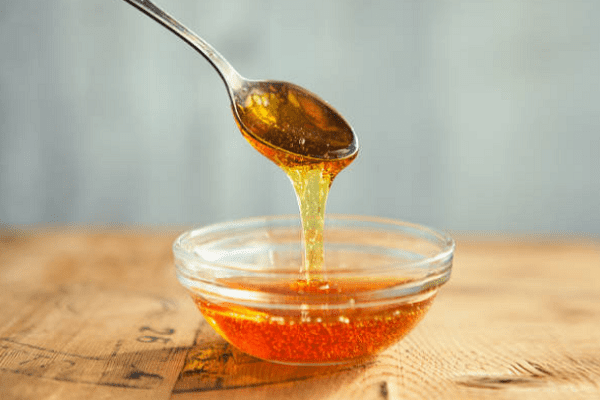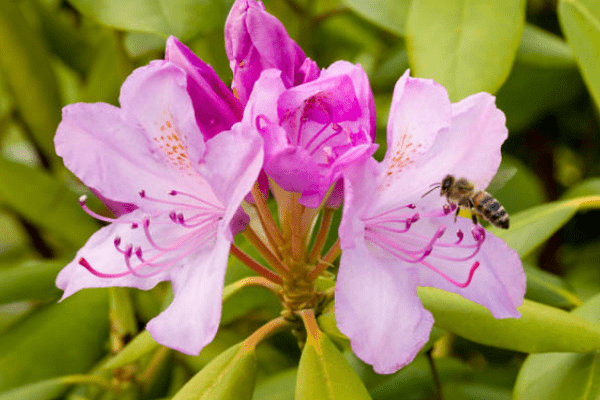Emergencies >>>> Honey poisoning - how to recognize?
Honey poisoning - how to recognize?

Honey is one of those unique food products that can be stored almost forever and not deteriorate to the point of inedibility due to the fact that the composition of honey itself suggests its preservation even in an unopened container. In the best case, honey will become sugary during long-term storage; in the worst case, if stored improperly (for example, in direct sunlight), it will lose its beneficial nutritional and medicinal qualities. But there are known cases of honey poisoning, which are associated not with the deterioration of the product, but with its origin. It turns out that honey collected from the flowers of some poisonous plants can be so poisonous that it provokes all the typical signs of poisoning in the body.
It is believed that plants such as Rhododendron (Ericaceae D.C.), Calluna vulgaris (Ericaceae D.C.), Hotsutsayi (Ericaceae D.C.), Pontine Azalea (Ericaceae D.C.), Laurel, Ledum (Ericaceae D.C.), growing near the location of honey bee hives, become a source of poisonous honey. Entomologists, considering the behavior of honey bees and their vital activity, noticed that the poisonous alkaloids found in the nectar of flowers do not affect the health of insects such as bees, but these alkaloids have a toxic effect on humans, causing complete poisoning of the body with signs of food and chemical poisoning.

The nectar obtained from the flowers of Calluna vulgaris, Hotsutsayi, Pontine Azalea, Laurel, Ledum and Rhododendron plants contains an alkaloid called “Andromedotoxin”. Scientists studying the composition of honey collected from various plants have noticed that most plants whose flowers contain Andromedotoxin in their nectar have an intoxicating odor when flowering.
Beekeepers who are familiar with the flora surrounding their place of residence do not harvest honey from bee hives whose bees collect nectar from poisonous plants surrounding the hives. Beekeeping in such areas is engaged in the collection and preparation of beeswax for various household, medical and technical purposes.
In order not to accidentally get honey poisoning, which is extremely severe, when buying honey for food, you should ask in what area this type of honey was collected .
How to recognize honey poisoning in order to provide first aid to yourself and your loved ones? Poisoning with poisonous honey is similar to any food poisoning that occurs in a moderate form (without hospitalization). But poisoning with poisonous honey can resemble a food allergy and thereby mislead a person who experiences discomfort after eating honey.
Signs of poisoning from poisonous honey begin to increase over the next half hour, and can also begin within two hours after consuming questionable honey.
- Rashes appear on the skin and itching may develop.
- Typical symptoms of honey poisoning include dizziness, nausea and vomiting.
- Stupor and loss of consciousness may occur (there are cases where the unconscious state lasted for a day after consuming a large portion of poisonous honey).
- The complexion becomes pale and blue.
- Difficulty breathing (shortness of breath appears) and increased sweating.
- The pulse slows down to 50 beats per minute.
- Very poor health lasts about 4-5 hours, and final recovery comes after 2-3 days. No cases of death have been recorded from poisoning with poisonous honey.
First aid for poisoning with poisonous honey or for suspected honey poisoning comes down to timely contacting a medical facility or calling an ambulance. At home, helping a person with poisoning from poisonous honey comes down to using medications - adsorbents (for example, activated carbon powder). Since activated carbon is most often sold in tablet form, for a more effective and faster effect of activated carbon, it is necessary to crush the tablet to a powder state.

Prevention of poisoning by poisonous honey or poisoning by honey of dubious origin is necessary in cases where there is no complete certainty that the purchased honey could not have been collected from hives located in areas with poisonous plants growing. To prevent honey poisoning, it is recommended to heat questionable honey to 113 degrees Fahrenheit (45 degrees Celsius) or heat honey under a pressure of 65 mm Hg to 113 degrees Fahrenheit (45 degrees Celsius). A pressure canner can be used for these purposes.
It is not worth collecting honey from the nests of wild bees for profit or for food if the surrounding flora is unfamiliar, since poisonous honey is a common occurrence in places where the listed plants grow.

Read

Read



























